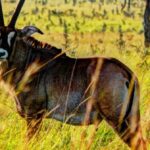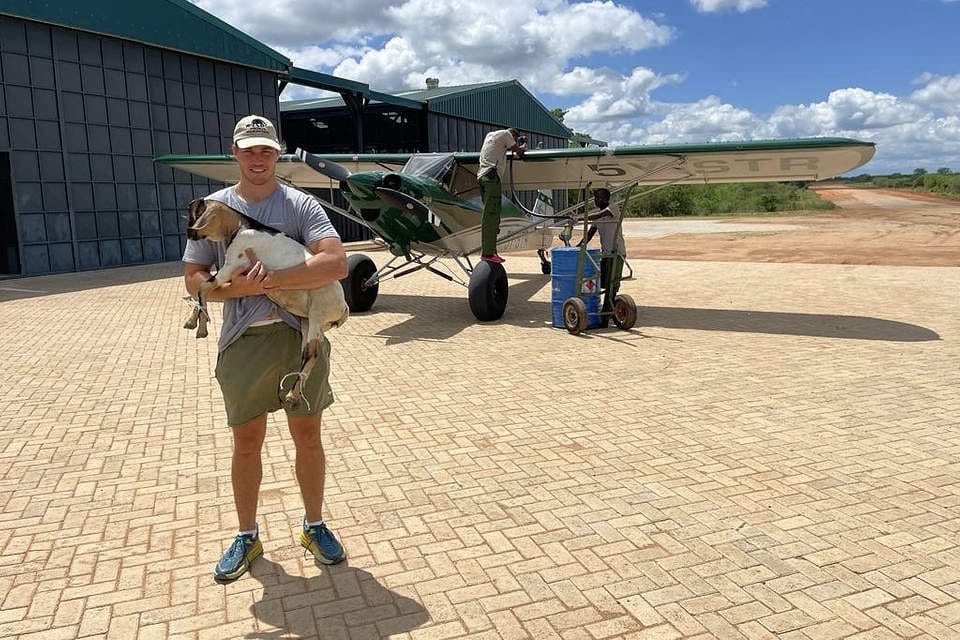[ad_1]
Projects to restore seagrass are gathering pace from the Gazi Bay, in Kenya, to Maputo Bay, in Mozambique, all the way to Dale Bay in Wales.
Seagrass, which evolved over 70 million years ago from terrestrial grass, is one of the most diverse and valuable marine ecosystems on the planet. It plays a crucial role in combating climate change, ensuring food security, protecting coastlines, enriching biodiversity, controlling disease and filtering water.
Seagrass meadows – expanses of green, grass-like shoots and flowers – are a hugely effective nature-based solution to climate change. They cover only 0.1 per cent of the ocean floor but store around 18 per cent of oceanic carbon. They are also home to fisheries that not only provide food and livelihoods to coastal residents but help increase ocean biodiversity.
According to the United Nations Environment Programme (UNEP) research, seagrass habitats are in grave danger. They have been in decline since 1930 and today 7 per cent of seagrass habitat is lost each year, the equivalent of a football field every 30 minutes.
Climate change along with increasing coastal populations, dredging and unregulated fishing have all contributed to this decline.
“We have to be aware of the impact these activities have on our coastal ecosystems,” said Leticia Carvalho, Head of the UNEP Freshwater and Marine Branch. “We need to ensure we prevent, halt and reverse damage to seagrass meadows wherever possible.”
Seagrass zones are among a growing number of ecosystems, including forests, savannahs and mountains, under pressure from human development. Every year, the world loses enough trees to fill the Republic of Korea and since 1970, 30 per cent of natural freshwater ecosystems have disappeared.
A global effort

As the world gets ready to enter the UN Decade on Ecosystem Restoration, a worldwide push to revive natural spaces, reversing the decline of seagrass will take an international effort, say experts. Seagrass is found in the coastal regions of 159 countries on six continents and covers an area of around 300,000 km2.
“We need to work together as a global community to ensure that we recognize and support seagrass restoration as an important action that helps to reduce global warming,” added Carvalho.
UNEP is supporting several seagrass projects, including the Mikoko Pamoja project in Gazi Bay, Kenya. Mikoko Pamoja, Kiswahili for “Mangroves Together”, also includes mangrove restoration and is designed to fight climate change, conserve biodiversity and improve livelihoods in the community.
As coastal populations, pollution, dredging and fishing increase we have to be aware of the impact these activities have on our ecosystems, said Leticia Carvalho, UNEP.
The project has been partially funded through the selling of carbon credits and shows how collaboration between local, national and international organizations can lead to successful ecosystem restoration.
Income from the project supports further ecosystem development and the community. Mikoko Pamoja has provided clean water, through the digging of wells, for 3,500 people and 700 children have received education materials.
On top of this local schools have been repaired and improved. The project has been so successful it was awarded the Equator Initiative for community solutions to climate change. It has also led to the development of the larger Vanga Blue Forest project, although this is mainly focused on mangroves. It has drawn in seed funding from the Leonardo Dicaprio Foundation.
“Projects such as (Mikoko Pamoja) show that community-based approaches to conservation and restoration can be most effective in protecting unique ecosystems and ensuring that communities directly benefit,” said Carvalho. “It is possible to restore and repair ecosystems and also benefit the communities around them at the same time.”
The post Seagrass makes a comeback appeared first on KBC | Kenya's Watching.
[ad_2]
Source link


















